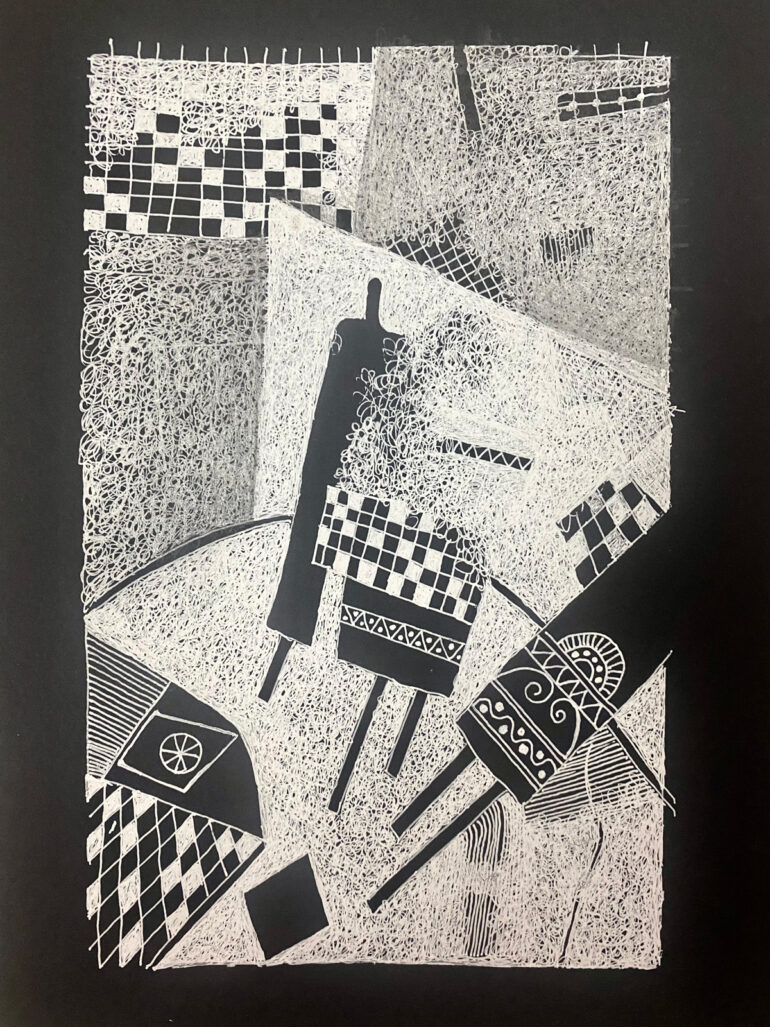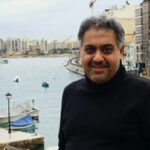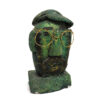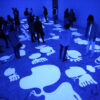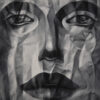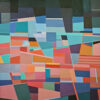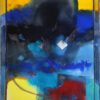Since its inception in 1980, the Emirates Fine Arts Society has endeavoured to support visual and fine arts in the UAE. Over the last several years, the Society has organised a range of initiatives to achieve its objective of bringing the UAE’s fine arts movement on par with the Arab and global fine arts movements. The Emirates Fine Arts Society helps promote artists by presenting private and public exhibitions, publishing educational essays and critical articles as well as organising lectures and seminars to encourage a greater understanding of art. The private exhibition of artist Tayeb Al-Hajj, presented by the Society at its gallery in a heritage building in Sharjah’s Arts Square, is an example of its commitment to provide a space for artistic and visual juxtaposition. The exhibition is a critical platform that gives the audience an opportunity to discover the artistic and aesthetic values expressed in Al-Hajj’s exceptional paintings and appreciate his unique style.
Sudanese artist Tayeb Al-Hajj creates a lexicon of literary and artistic symbols in his paintings by adopting a different approach in each of his works. This lexicon consists of a subject, such as human characters, crescents, metaphors of a chess board, flutes and clarinets, ghosts of planets and stars or decorated bar motifs. Beyond the central elements depicted on the canvas, the cosmic horizon can be seen, stretching over the background in many of the paintings. The artist expands the contexts of these symbols by embracing various artistic styles as well as making use of his vast experience with the colour palette and its numerous combinations. Through his experimentation in composing the themes of paintings and their formations, Al-Hajj produces a distinctive arrangement of aesthetic unity that emerges through an unexpected portrayal of contrary convergence.
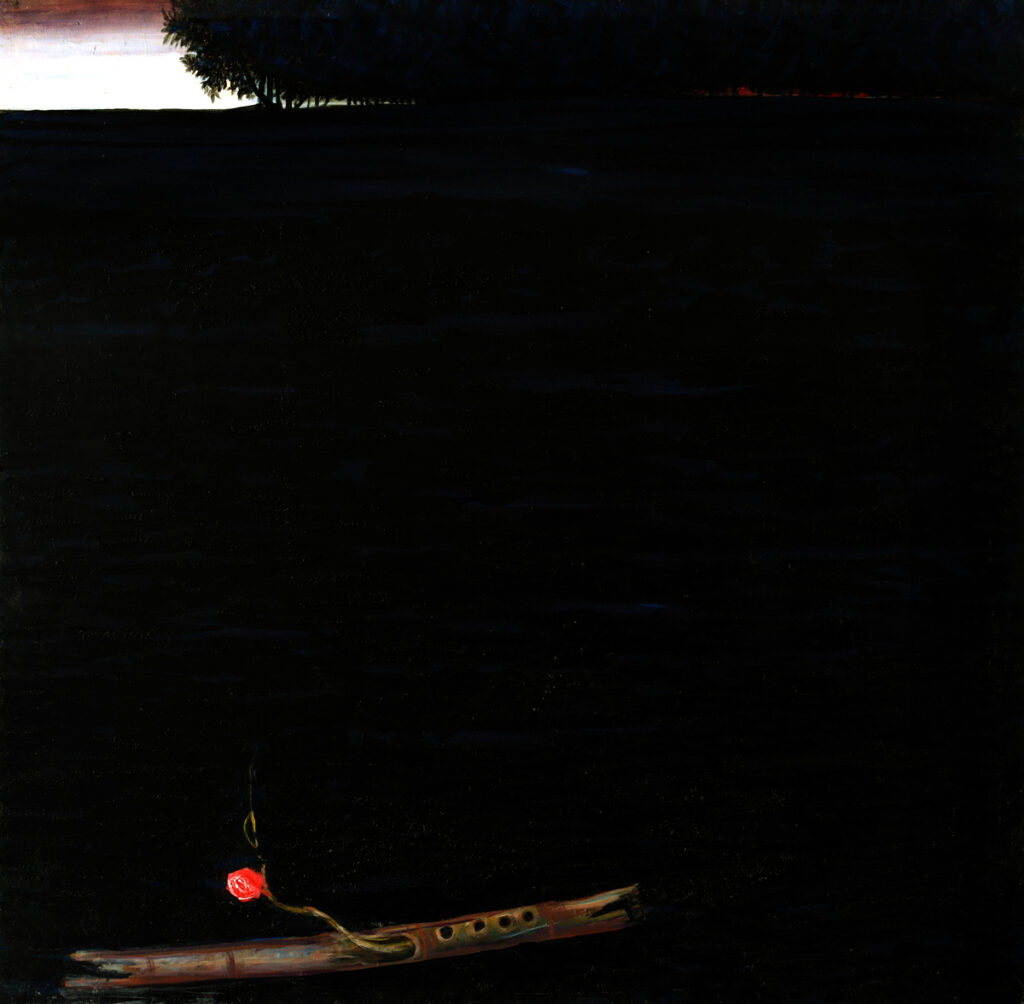
Among other artistic styles, the artist is inspired by the famous artistic style in Sudan, in which artists use a shade of white to cover the background of the subject and define the outlines of the characters and elements in the composition. This gives the surface of the painting a sculptural feel, accentuating the size versus the void aspect.
Al-Hajj challenges this tradition by replacing the white, used predominantly by most Sudanese artists to cover the background, with grey or other darker hues, for example, as can be seen in three paintings in which dark blue is prevailing over the characters and subjects. In other paintings, the artist boldly divides the composition, where the coloured rectangular spaces, although separate, appear to be adjoined and connected. The artist achieves such adjacency and connection through meticulous attention to detail that entails depicting small abstract shapes which fill places within these rectangular spaces. He paints the backgrounds of these paintings in grey, while some rectangular spaces inside the composition are in a lighter shade of grey.
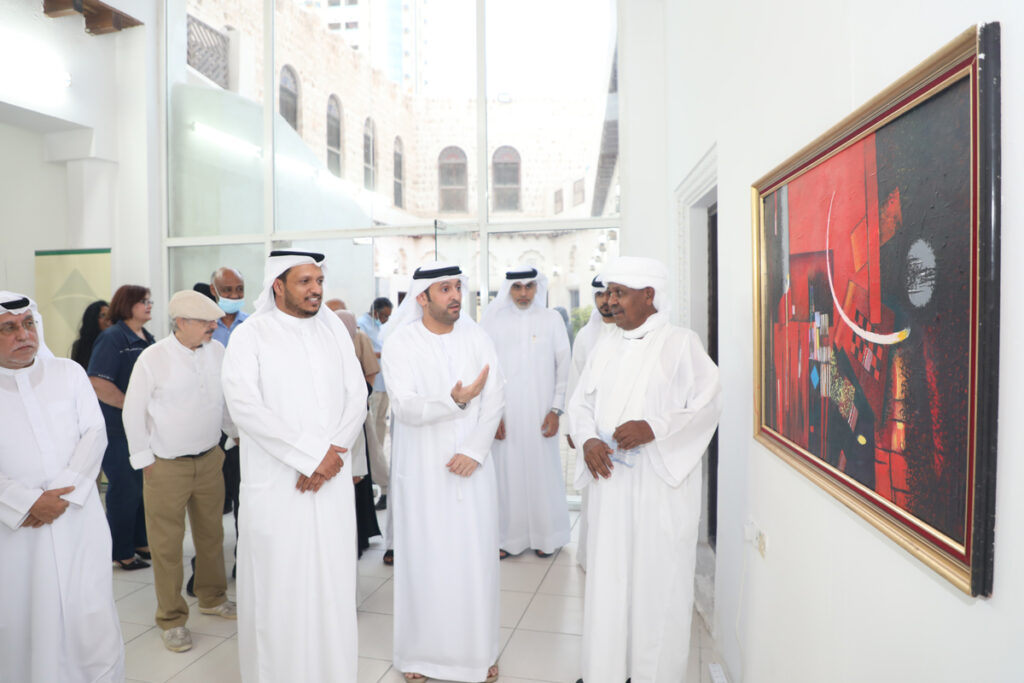
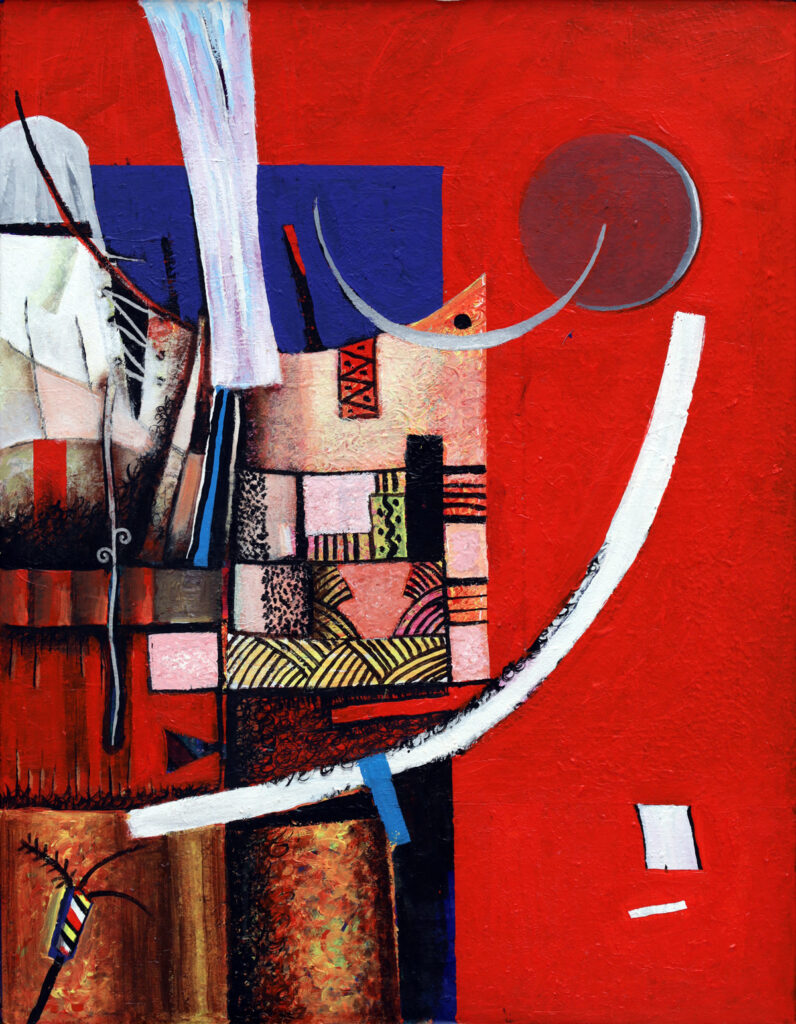
In other paintings, we notice the background has been rendered in different colours, such as light and dark brown or other similar hues. However, there is one painting in the series for which the artist retains the original style, wherein the background is white. Al-Hajj’s inclination to use diverse colours in the background reflects two aspects vital to the artist, his desire for change and regeneration, and his wish to emphasise that this change is not coincidental, but a result of articulating his artistic identity. The artist recognises his discerning attributes, and uses this knowledge to chisel his regenerated artistic personality.
In one of the paintings, Al-Hajj used all shades of grey to render the subject; we see that the elements of composition are drawn in various shades of grey while the background is dim. In another painting, the artist mixes primary and secondary colours to obtain a striking grey shade by using the concept of complementary colours,
where two colours cancel each other out to produce an imponderable shade of indefinite grey. The elements and characters in the painting are subjected to a great deal of outlining and drawing, while some small spaces within the paintings are carefully filled with details that make them look like paintings within paintings. This individualistic method gives the artist an opportunity to achieve the aesthetic unity in his works. The major contrary convergence between the outlining accuracy and the diversified drawing in elements, characters and symbols on one hand, and the space which is usually expanded by the monochrome in the background on the other hand, represents a sculptural notion, highlighting the size versus the void feature, as mentioned before. The artist primarily uses this method in his small and big paintings. His careful work on symbols and their surrounding spaces in some of his small paintings formally leans on graphics. This is limited to black and white in some of the smaller paintings, as all these actions indicate the artist’s literary or poetic tendency.
An attentive visual study of the artist’s paintings reveals perceptive or poetic elements, in a way that shows these paintings as texts of condensed symbols and gestures that manage to create amazement out of the ordinary, or out of what the viewers think they already know. The paintings present gentle interpretations of the characters, symbols and everything that surrounds them as well as deep references to the horizon in each of the paintings. They also address the historical subconscious of the artist’s community, or perhaps the entire world, through aesthetic suggestions that imbue symbols and characters which are derived from the first human civilisations. The artist confirms this, either indirectly in an interpretive way, or sometimes in a distinct manner that is similar to the clarity of surreal symbols, which directly leads to other interpretations. For instance, the painting that depicts a sprig separated from a tree, with holes in the stem, which resembles a flute, and a rose at the sprig’s end, raises pertinent questions: Was the flute there in the beginning? Is this rose a temptation of the land as the apple was the temptation of the heavens?

A researcher for knowledge, visual artist, art critic, poet, musician, and director of the Artistic Heritage Department at Sharjah Institute for Heritage.

